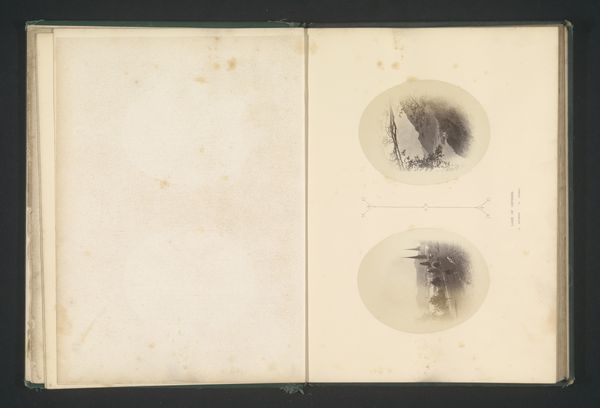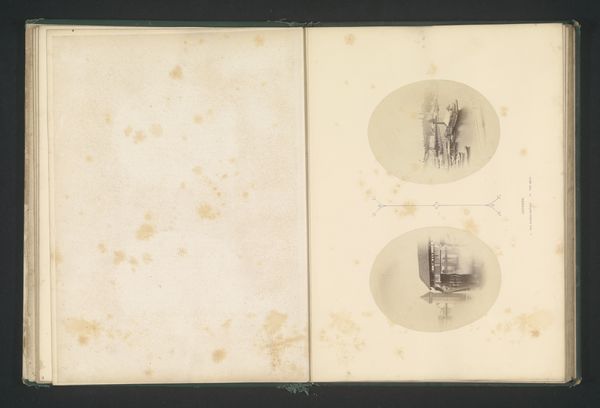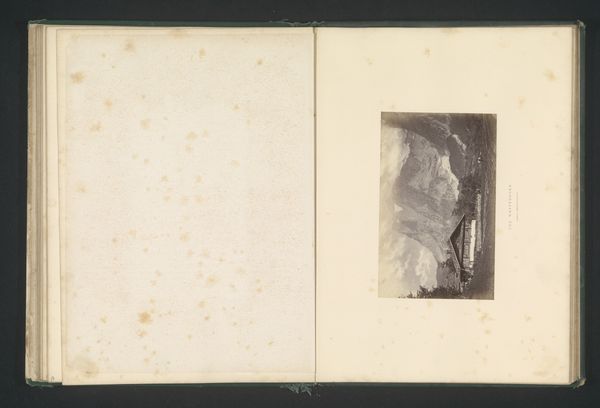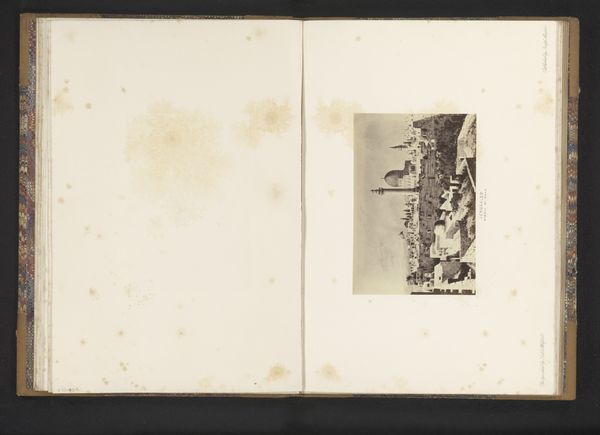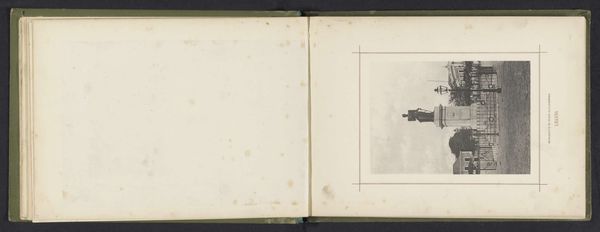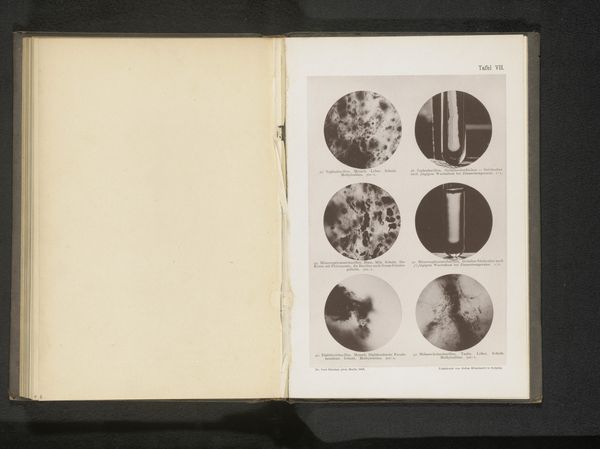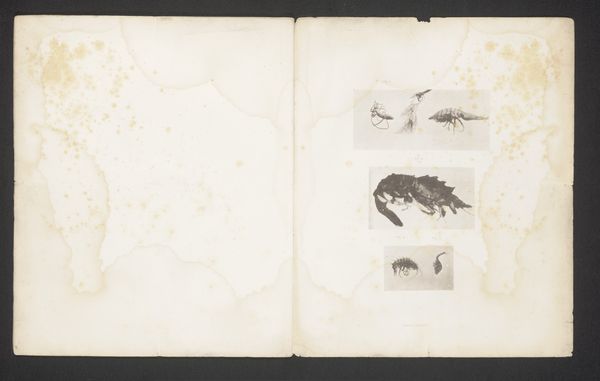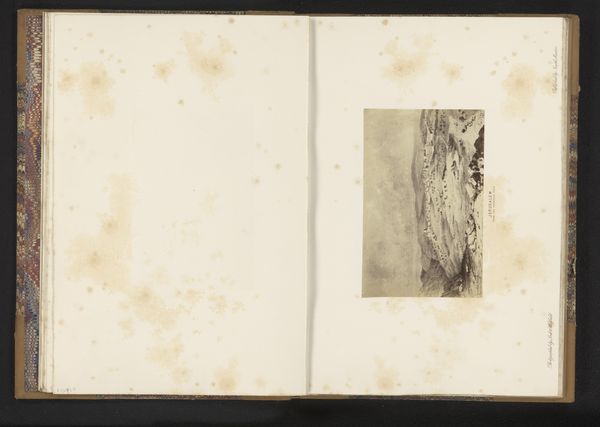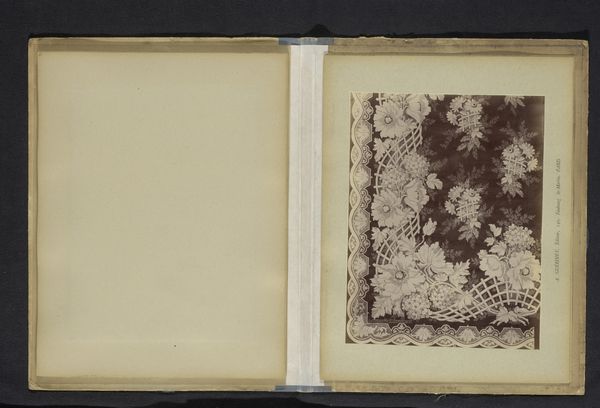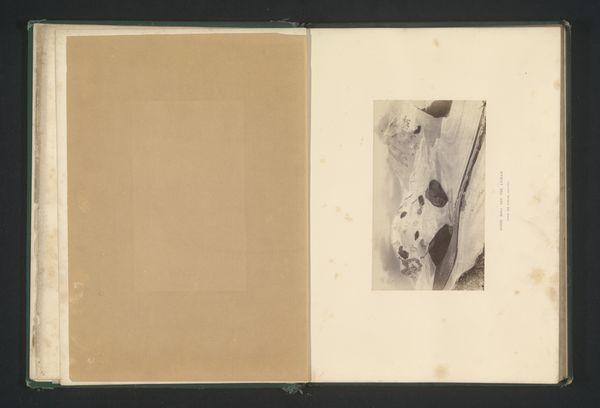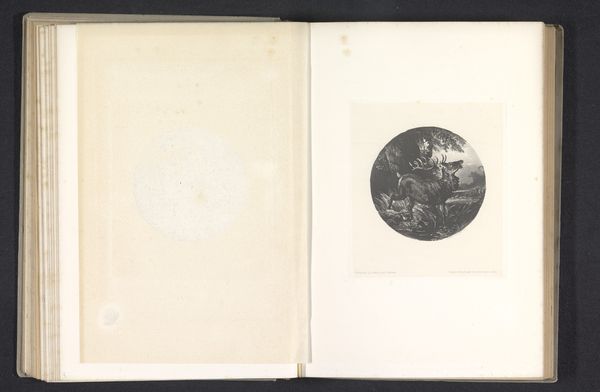
Dimensions: height 120 mm, width 95 mm
Copyright: Rijks Museum: Open Domain
Curator: Let's turn our attention to "Gezicht op het Lago Maggiore," a drawing or print created before 1868 by Stephen Thompson. What are your initial impressions? Editor: It feels like stepping into a faded dream. The aged paper and sepia tones lend this quiet melancholic air to what should be a lively landscape. Two circular vignettes floating on a blank canvas - they resemble memories more than depictions. Curator: The choice of media is crucial. It's printed on what appears to be aged paper, likely homemade. The texture, those age spots—they're all part of the artistic statement. The very materiality evokes history and the passage of time, becoming integral to the narrative. This isn't just about representing a place. It’s a reflection on how we perceive and remember landscape itself, even how we fetishize aged materials. Editor: Absolutely, and the circular frames, rather like a daguerreotype. I sense yearning... a longing to somehow recapture what has now moved beyond reach. The landscape here, the lake, is both there and absent at once, partially erased as in a recollection. Are the subjects longing to see their past again? Curator: This speaks to the romanticism evident in 19th-century landscape art. Consider the socioeconomic implications: paper production, printing techniques, how these methods made landscapes accessible to a burgeoning middle class and beyond those who directly accessed landscape through traveling or even property ownership. Landscape becomes a consumable image—literally. Editor: Precisely! You know it's funny, because even though the image is quite faint, a kind of defiant script marches down the side; you can hardly see it, yet, at the same time, it speaks loudly. There is no erasing some narratives; only history gets the ability to render aspects less vivid. It suggests, at least to me, a whisper that has nonetheless outlived any intention for forgetting. It's so incredibly beautiful. Curator: Right, so beautiful, and even the so-called "flaws" – the aged paper, the fading – only intensify the work's commentary. This era really interrogated the role art played, its labor, its means. Editor: It gives me pause… makes me consider what landscape means for me now versus its depiction back then. The romance isn't gone, merely repurposed, and thanks for giving language to something inchoate I've been turning over for months now.
Comments
No comments
Be the first to comment and join the conversation on the ultimate creative platform.
